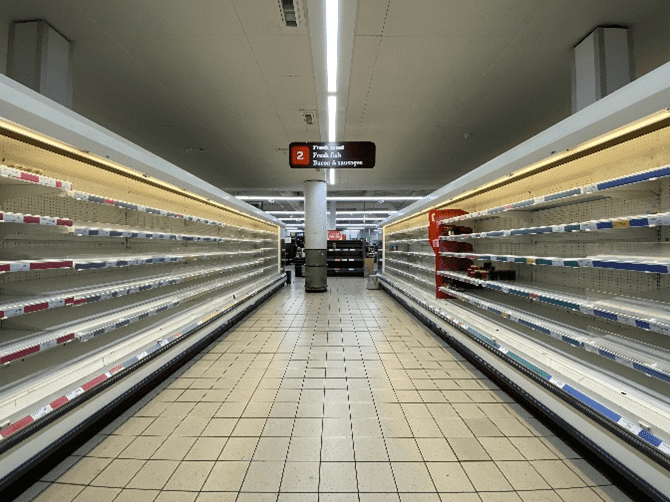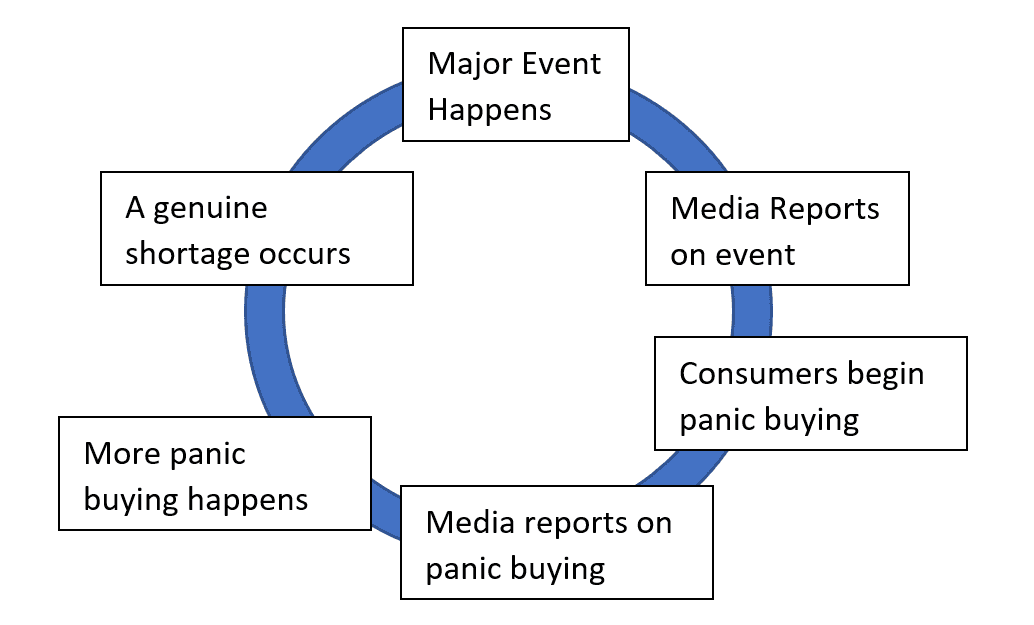America’s Favorite Pastime. No, Not Baseball—Panic Buying.
Hailey Russell
Consumers, Behaviors, Panic Buying, Analytics
May 25, 2021
America’s Favorite Pastime. No, Not Baseball—Panic Buying.

Think back to the spring of 2020. Do you remember roaming the aisles of your local grocery store, hunting for pandemic essentials? All the cleaning products had been snatched from the shelves. Every brand of tissue had been bought out. Friends and neighbors were stockpiling their freezers with meat.
What on Earth Happened?
“Panic buying” happened. Although it was around long before COVID-19, “The Great Tissue Shortage of 2020” elevated this phrase to household status.
Panic buying describes a phenomenon in which consumers buy large quantities of goods in anticipation of a disaster, shortage, or price hike.
By May 2020, finding a decent pack of toilet paper was like striking oil. Some folks hoarded. Others bought and resold packs at exorbitant prices to turn a profit.
A more recent example: hoarding gas in preparation of a shortage. The day after the Colonial Pipeline was hacked, people started lining up for gas as though they were fleeing a hurricane. Pictures of people filling trash bags, mason jars, and grocery bags with gas began to circulate on social media. This, coupled with the mere idea of a gas shortage, sparked panic in Americans.
What’s the Big Deal?

There’s no doubt that empty shelves give off an eerie vibe.
Once people get scared, they rush to the stores to stock up on items they believe will become scarce. But they’ve got it backwards: they’re the ones creating the shortage.
Panic buying puts an unforeseen stress on retailers and distributors. Retailers can’t meet the sudden, increased demand for certain goods, and distributors can’t get more goods out efficiently. Retailers are left to ration out their items and cap the number one customer can purchase (a tactic we saw last year).
Remember the bank runs of the 1900s? America experienced major financial instability during the Panic of 1907 and the Great Depression. Financial institutions were bombarded with customers wanting to withdraw all their funds.
But banks only keep enough cash on hand to cover possible transactions. When customers withdrew all their cash, they were quite literally tapping the bank dry. They blocked other customers from withdrawing even a small portion of their funds.
It would be nice if humans could approach disasters with a “business as usual” attitude. Unfortunately, fear doesn’t allow us to do so.
We create genuine shortages when the entire nation demands certain goods at once. Ideally, retailers should maintain a stock from which everyone can purchase. Instead, a few people buy up and build their own personal stock—but to only their own benefit.
What Can We Do About It?
When they detect the first signs of panic buying, retailers could immediately place caps on highly sought-after goods. Many did so last year, in fact; throughout 2020, most cleaning and hygiene products were limited to 1 or 2 units per customer.
The media plays a big role in panic buying, too. Every minute of airtime devoted to showcasing long lines, empty shelves, and interviewing panicky people makes the situation worse. Viewers start to believe they, too, should rush to the store and stock up. Instead of feeding into the panic, news outlets should consider a more informative approach.
The last, most obvious solution? Just stop. For the sake of retailers, your community, and your friends and family, just stop panic buying. If America could lead the charge on this issue, we could inspire populations around the world to behave better during times of trouble—and save ourselves a lot of trouble.
What do you think it will take to get people to stop panic buying?
Ready to learn more? Contact Causeway Solutions to get started!